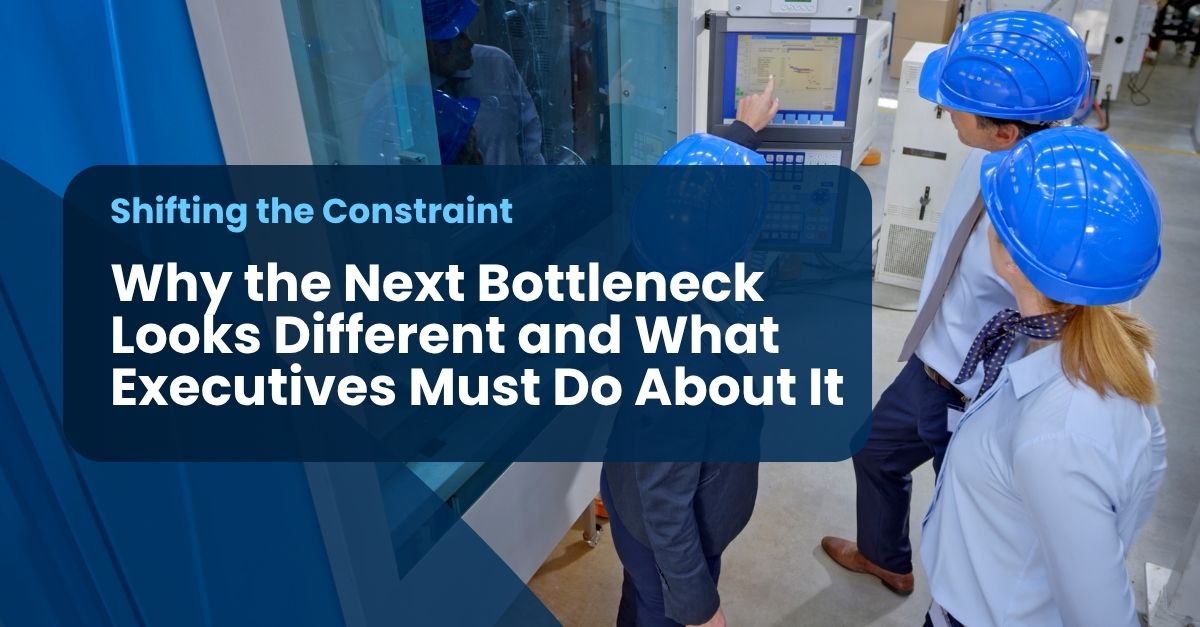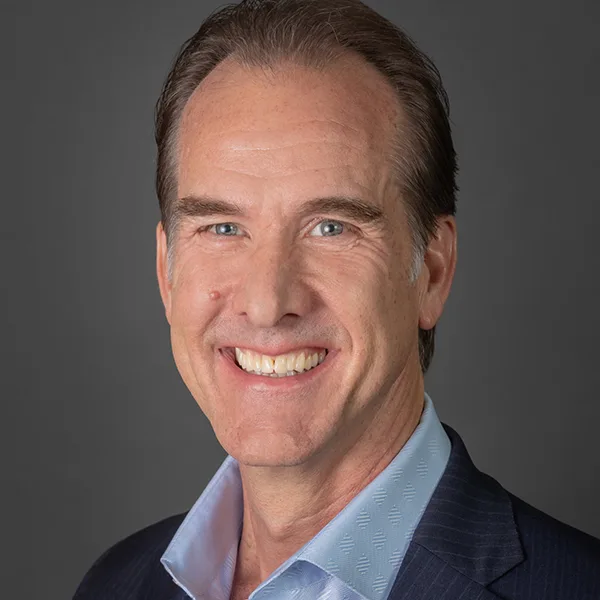
Every manufacturer has faced it: the moment a major constraint is eliminated, performance jumps, and then stalls again. The culprit? A new bottleneck has taken its place.
Flow never stands still. Once you fix one limiter, another quietly emerges somewhere else in your system, your people processes, or your supply network. The lesson is simple but strategic: removing bottlenecks is not a one-time event. It is an ongoing leadership discipline.
The Nature of Shifting Bottlenecks
Every operation has a constraint—the point in the system that determines how much can truly be produced. Once that constraint is removed or relieved, the system’s capacity expands until the next weakest link reveals itself.
This is what the Theory of Constraints (TOC) calls the “shifting bottleneck” effect.
It happens in nearly every improvement effort:
- A packaging line’s changeover improvements expose a gap in upstream material availability.
- A faster shift startup reveals decision delays in scheduling.
- Better maintenance routines uncover skill shortages or misaligned staffing.
This migration is normal, even healthy. It is proof that the system is evolving. But for leaders, it demands vigilance. Sustained performance depends on how quickly your team can identify the next constraint and adapt before it limits throughput again.
Operational maturity is not measured by how fast you fix one bottleneck, but by how fast you find the next one.
Beyond Projects: Thinking in Systems
Many organizations treat bottlenecks as isolated projects—a machine upgrade, a scheduling tweak, or a process fix. But true operational excellence comes from thinking in systems, not projects.
That means:
- Daily flow reviews that surface delays in real time
- Short-interval control loops that keep production aligned with schedule and material flow
- Standardized escalation routines that ensure the right level of leadership acts quickly
- Empowered frontline supervisors who know what to measure, how to react, and when to elevate
When the MOS is strong, constraint management becomes continuous. Instead of reacting to disruptions, leadership sees them forming and intervenes early. The result is not just smoother flow but predictability, accountability, and sustained profitability.
How to Anticipate the Next Constraint
For executives, bottleneck anticipation should be built into the rhythm of leadership. It is how world-class operators prevent performance from plateauing.
Here is a practical five-part playbook:
1Map the Flow Regularly
At least once per quarter, walk the value stream with your team. Track cycle times, waiting periods, and information handoffs. Use both data and direct observation. The new constraint will always leave clues—idle time, stacked work in process, or recurring schedule misses.
2Link Constraints to Financial Impact
Not every delay matters equally. Quantify where each minute of lost flow hurts the bottom line most. Tie constraint improvement priorities to measurable impact such as throughput, yield, or on-time delivery.
3Build Cross-Functional Visibility
Make sure production, planning, maintenance, quality, and supply chain share one version of the truth. Most hidden constraints live in the space between departments. Connecting metrics across silos often exposes what floor-level KPIs alone cannot.
4Equip Supervisors to Detect Disruptions
Frontline leaders are the first to see emerging constraints, but only if they know what to look for. Train them to monitor flow, escalate deviations, and lead short-interval problem solving. This skill, more than any system or dashboard, determines sustained improvement.
5Review Your Management Operating System (MOS)
As constraints shift, so should your daily management routines. A MOS that once focused on downtime may need to focus on material flow or decision speed. The best organizations evolve their MOS quarterly to match where their real constraint now resides.
Eliminate, then elevate. Every gain reveals the next opportunity. The leaders who build this reflex into their operating rhythm never lose momentum.
The Leadership Imperative
For operations executives, the takeaway is clear: bottleneck removal is a continuous system of leadership, not a single event of improvement.
Each improvement cycle expands capacity. Each expansion reshapes where the constraint lives. The organizations that stay ahead are those whose leaders build the mindset and management discipline to anticipate, not just react.
As your operation grows, ask:
- Are we detecting constraints fast enough to stay ahead of demand?
- Does our MOS still align with where performance is now limited?
- Are our frontline leaders equipped to sustain the new standard?
Improvement without sustainment is just another short-term project. Long-term profitability comes from systems that keep flow visible and leadership aligned.
Missed a Step in the Series?
Catch the full Reducing Production Bottlenecks collection from October:
About POWERS
At POWERS, our management consulting approach helps manufacturers move beyond short-term fixes to build sustainable performance systems.
We design and implement Management Operating Systems (MOS) that embed bottleneck detection, problem-solving discipline, and frontline leadership capability into daily operations. Our consultants work alongside your teams on every shift, in every process, to make improvement a repeatable part of how your business runs.
- Speak to an Expert: Call +1 678-971-4711 to discuss how frontline leadership development and DPS can close your skills gap and streamline tech adoption.
- Email Us: Reach out to info@thepowerscompany.com for personalized insights on reducing friction in your operations.
- Request an Assessment: Visit our online contact form to schedule an assessment with our expert consultants, identifying quick wins to equip your leaders and boost performance.

